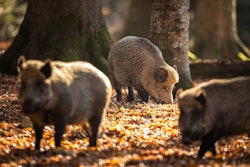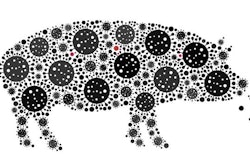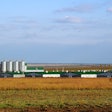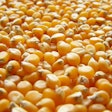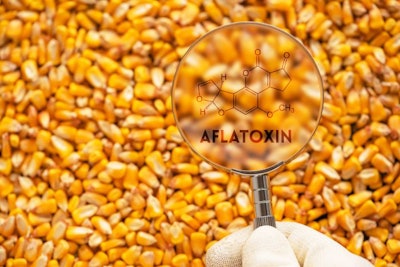
Mycotoxin occurrence and prevalence are increasing along with global temperatures, but there are many strategies to adapt and minimize risks
Climate change is contributing to increases in mycotoxin occurrence and prevalence, and experts say the strategy for minimizing the associated risks is multifaceted.
Mycotoxins are generally seen in the same places year after year. For example, aflatoxin is typically seen in the southern regions of the U.S. in crops such as corn and cottonseed, according to Radka Borutova, European technical support manager for Alltech Mycotoxin Management.
“However, last year saw optimal conditions for the development of aflatoxin spread far north and east into the primary corn growing regions,” she said. “If drought events like (in recent years) become more prevalent across different regions, we could continue to see changes like this in mycotoxin contamination patterns with subsequent effects on the feed and food chain.”
Clement Soulet, additives category lead for Cargill’s animal nutrition business, said data from the past five years “clearly indicate that mycotoxin prevalence is increasing.”
In 2016, an average of 65% of tested samples contained at least one mycotoxin; in 2021, it is approximately 80%, he said.
“Increase of prevalence over the past five years is due not only to technological advancement in our ability to identify mycotoxins (lower detection limits with more advanced technologies), but also due to external factors including meteorological changes. This has led to changing mycotoxin distribution patterns and greater spread. We expect this trend to continue, and even accelerate, over the next five years,” he said.
The most prevalent mycotoxins that occur worldwide are fumonisin, zearalenone and deoxynivalenol, Soulet said, but Borutova added that Alltech’s 2020 European harvest analysis found emerging mycotoxins such as beauvericin and moniliformin were the most prominent.
“It is probably still unclear if this is due to changing weather patterns or advances in detection techniques and our greater understanding of this mycotoxin category,” Borutova said.
Higher mycotoxin prevalence worldwide
Multiple sources said the levels of mycotoxin contamination in grains and feeds worldwide have increased in the past several years.
“Currently, we are experiencing higher aflatoxin prevalence in wheat from Central Europe. Aflatoxins which are extremely hazardous and historically found mainly in tropical climates have been detected in more moderate zones or in new crop varieties in recent years,” said Konstantinos Sarantis, product manager at Biomin.
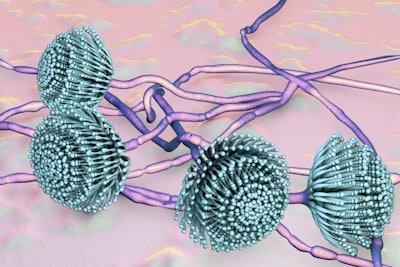 The mold aspergillus results in aflatoxins. In the field, they thrive in dry and warm conditions, and in grain storage, aflatoxins can develop with the presence of moisture, so adequate drying is essential. (Dr_Microbe | Bigstock.com)
The mold aspergillus results in aflatoxins. In the field, they thrive in dry and warm conditions, and in grain storage, aflatoxins can develop with the presence of moisture, so adequate drying is essential. (Dr_Microbe | Bigstock.com)Sarantis said the occurrence of mycotoxins is the result of the interaction of three things: the fungal pathogen, the host plant and the weather.
“Plant varieties and agronomic practices can determine susceptibility to infection. Different fungal isolates compete for substrate on the host plant, those that prevail may vary in their ability to produce mycotoxins,” he said. “Weather, especially from flowering onwards, determines conditions for successful fungal infection and further mycotoxin production. In addition, insects and environmental stresses can also contribute to higher contamination levels. High temperature, rain and stresses like drought or flooding that are often associated with climate change are the main weather factors that support mycotoxin production.”
He said overall mycotoxin risk is expected to increase with global warming, and weather extremes increase plants’ vulnerability and provide more opportunities for toxin-producing fungi to thrive.
However, Borutova said, the effects of climate change will not be consistent and will instead depend on local environmental conditions and the crops grown.
“Countries who currently have temperate climates are predicted to see the greatest increase in mycotoxin risk as average temperatures rise,” she said. But, “while many (predictive models) point toward increased risk from key mycotoxins, such as aflatoxin, deoxynivalenol and fumonisin, certain scenarios actually predict a reduction in mycotoxin risk in some regions due to less moisture-induced plant stress and enhanced storage conditions.”
Because of that, she said, “it will be interesting to see if some regions may actually benefit from climate change in terms of crop production, cooler temperate regions may see greater yields due to longer growing seasons, a wider variety of crops may be grown, while storage conditions could also be improved in drier scenarios.”
Soulet pointed out that mycotoxin occurrence is highly linked to climate conditions, such as excessive heat or cold, drought or excessively wet weather, as well as carbon dioxide levels and poor pollination.
“Most plant pathogens have optimal environmental conditions for growth and mycotoxin production. As a result, climate change will lead substantially to changes in mycotoxin distribution, frequency and spread,” he said. “While cooler climates will favor the occurrence of certain mycotoxins, such as deoxynivalenol and T2 toxins, warmer climates will cause an increase in other mycotoxins such as aflatoxin and fumonisin. In a changing climate, mycotoxins will contaminate new geographical areas and new crops as well. As an illustration, the expansion of aflatoxin prevalence in corn in (southern) Europe is likely in coming years due to favorable climatic growth conditions for the aflatoxin-producing fungi Aspergillus.”
Arnau Vidal, global technical manager – toxins and stress at Innovad, agreed that rising temperatures and carbon dioxide levels will cause significant effects on mycotoxins.
“One of the most concerning conclusions from scientific studies is that mycotoxins will contaminate new crops and new geographical areas. So, animals will suffer a higher exposure to mycotoxins as consequence of the changing climate. This will cause a big impact in animal production as it will reduce productivity and damage animal health status,” he said. “It seems that temperate climates as detected in Europe, North America and Asia will face the highest risk of increased mycotoxin contamination of crops. Actually, many of these hypotheses have been already observed in the field. Thus, nowadays it is not strange to detect aflatoxins in some regions of Europe where some years ago they had never been detected.”
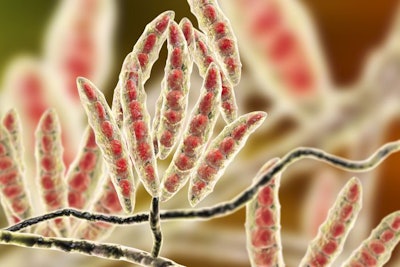 Fusarium causes several types of mycotoxins, including Type A and Type B trichothecenes, as well as fumonisins, zearalenone and fusaric acid. (Dr_Microbe | Bigstock.com)
Fusarium causes several types of mycotoxins, including Type A and Type B trichothecenes, as well as fumonisins, zearalenone and fusaric acid. (Dr_Microbe | Bigstock.com)Tools to manage risk, adapt to changes
How can grain and feed producers adapt to the changing climate, and what can be done to mitigate mycotoxin risk in the future? Sources say a combination of tools will need to be implemented, with technology and innovation front and center, working alongside good management and risk assessment practices.
“The advances in technology and data means we are already seeing some developments in this area with technologies like mycotoxin prediction tools, sensor technology for grain storage and advances in analysis techniques and data management,” Borutova said. “Furthering these advances will inevitably require the need for innovative collaborations between organizations both inside and outside the agricultural sector. This sort of joined-up thinking presents a real opportunity to ensure we are minimizing wastage in the feed supply chain, providing animals with the best quality feeds for optimum productivity and delivering sustainable and safe food to the end consumer.”
Soulet agrees that technology that can assess and monitor mycotoxin risk will become more important.
“Data collection and evaluation will be of high importance to better understand mycotoxin prevalence and estimate risks for animals and humans,” he said. “An accurate mycotoxin risk assessment is crucial for the implementation of the right mycotoxin mitigation strategy at the right time, in the right place, with the right amount.”
Vidal agrees that risk assessment is important, but may not be enough.
“A correct risk assessment must be the first and main focus to mitigate the mycotoxin risk. Otherwise the mitigation is based on wrong assumptions,” Vidal said. But, to obtain a more precise exposure assessment, biomarker analysis is needed.
“In the next five years, biomarker analysis will be more extended in farms and it will allow to perform more accurate mycotoxin risk analysis and consequently mycotoxin strategies will be better optimized,” he said.
Technology may be able to improve some areas of mycotoxin mitigation, but traditional means of controlling mycotoxin risk are still important.
“There are critical control points right across the feed supply chain that can each have a significant influence on the level of mycotoxin contamination in the feed that the animal is consuming,” Borutova said. “Effective management of areas such as crop rotations, tillage practices, fungicide programs, harvest dates, crop storage conditions and effective mycotoxin testing programs will all play a role in helping to reduce the mycotoxin risk to animals. Accurately identifying and quantifying the potential mycotoxin risk in raw materials and finished feeds is a key component within this.”
Another tool is the development of new seed varieties that are resilient to mycotoxins. Vidal said that, while this could be an interesting strategy, “scientific experts pointed out that acclimatization of toxigenic fungi to climate change will probably be more rapid than the development of new resilient seed varieties able to grow under a climate change scenario. Therefore, innovation focused on storage and feed manufacturing must be the main objective to reduce the expected increase in mycotoxin exposure.”
Along with innovation, investment in certain tools and practices can also control risks.
“Climate change presents an opportunity for innovation up and down the supply chain and Cargill is investing in many of them,” said Andrea Chu, sustainability program lead in Cargill’s animal nutrition and health business. “For example, Cargill is supporting farmers in implementing regenerative agriculture practices such as crop rotation, which can limit mycotoxin presence. Additionally, we are investing in microbiome research to increase livestock resilience to disease and improve immune health in the face of mycotoxin exposure.”
Ryan Sirolli, Cargill’s row crop sustainability director, said crop management will be important in famers’ ability to adapt to changes to the environment.
“In terms of technology, there will be an increased focus on crop genetics so that these crops will better adapt to environmental stresses such as drought. Water management technologies such as micro-irrigation and drip irrigation will become increasingly more important, as well as the shifting of crop types to more water suitable areas,” he said, adding that crop types will need to be adjusted based on the environment.
“For example, corn may replace sorghum if an area becomes hotter or drier, or spring grains may be upgraded to summer crops,” he said. “We envision changes that may enable moving from single to double crops or from double to triple, depending on the region, allowing for intensification of the total crop yield on a per-acre basis in a given year.”
In the end, Sarantis said, complete elimination of mycotoxin contamination of feed materials is not possible. Mycotoxin detoxifiers, binders and purified enzymes can be used by feed and livestock producers, he said, as well as diluting contaminated materials or by pre-cleaning highly contaminated raw materials in the feed mill.
Margriet Faber, product specialist for feed at Olmix Animal Care, agrees that mycotoxins cannot be completely eliminated, but improvements can be made on seed genetics, cultivation, harvest, handling and storage of the crops, as well as grain cleaning in the feed mills and the use of in feed strategies to reduce the effects caused by mycotoxins.
“As mycotoxin development depends on local climate and weather conditions, we can’t completely eradicate them as crops are natural products,” Faber said.



